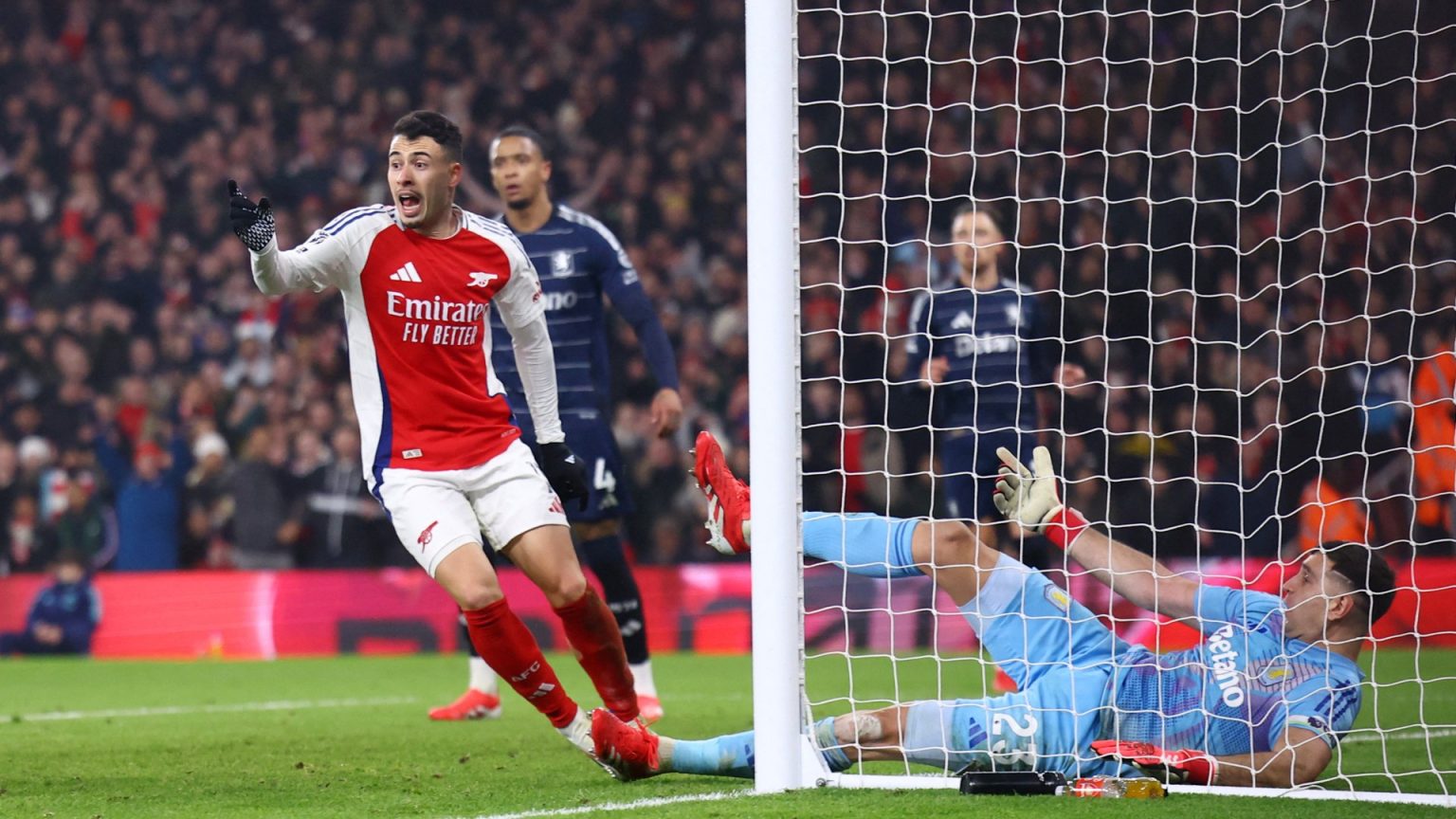Paragraph 1: The Match Setup and Early Dynamics
The Premier League clash between Arsenal and Aston Villa at the Emirates Stadium saw a key tactical shift for Villa with a change at left-back. The first half unfolded with Arsenal dominating the statistics, controlling possession and dictating the tempo of the game. Villa’s strategy relied on utilizing Ollie Watkins as an outlet, aiming to exploit counter-attacking opportunities. However, despite an early chance created by Maatsen and a mistake by Partey gifting Watkins a shot, Villa struggled to convert their limited opportunities into substantial threats. While Arsenal held a slender lead, the feeling persisted that another goal would provide much-needed comfort and solidify their advantage.
Paragraph 2: Half-Time Analysis and Arteta’s Frustration
At the halfway point, Arsenal held a narrow 1-0 lead, courtesy of Gabriel Martinelli’s close-range finish, which just barely crossed the line after deflecting off Emiliano Martinez’s chin. While Arsenal were undoubtedly the better side, Villa’s sporadic counter-attacks posed enough of a threat to keep the home side on edge. The tension surrounding the game was palpable, underscored by Mikel Arteta’s booking for vehemently protesting a throw-in decision that was clearly correct. Arteta’s outburst, directed at the fourth official, was indicative of the high stakes and the pressure to secure a win.
Paragraph 3: Martinelli’s Goal and Arsenal’s Dominance
Martinelli’s goal, though somewhat fortuitous, proved crucial in settling the nerves around the Emirates. The Brazilian’s strike resulted from a well-worked attacking move, showcasing Arsenal’s offensive prowess. While Villa occasionally threatened, particularly through Watkins, Arsenal’s overall control of the game was evident. They dictated the pace, controlled possession, and created more scoring opportunities, albeit without the desired clinical finishing.
Paragraph 4: Villa’s Tactical Approach and Arsenal’s Control
Aston Villa’s tactical approach centered around utilizing Watkins’ pace and power to create counter-attacking situations. However, Arsenal’s well-organized defense, coupled with their dominance in midfield, effectively limited Villa’s ability to generate sustained pressure. While Watkins’ early chance highlighted Arsenal’s vulnerability to quick transitions, their overall control of the game’s flow prevented Villa from establishing a foothold.
Paragraph 5: A Tense Atmosphere and a Moment of Friction
The match played out in a tense atmosphere, reflecting the importance of the result for both teams. Arsenal, eager to secure a win and solidify their position, displayed a sense of urgency, while Villa fought to stay in the game, hoping to capitalize on any defensive lapses. A minor flashpoint occurred between Morgan Rogers and Leandro Trossard, resulting in a shoving match. The referee intervened swiftly to defuse the situation, although Rogers continued to express his displeasure. Youri Tielemans stepped in as a peacemaker, calming the situation and restoring order.
Paragraph 6: Half-Time Summary and the Path Ahead
As the half-time whistle blew, Arsenal held a 1-0 lead, reflecting their overall dominance. Martinelli’s goal provided a crucial breakthrough, easing the tension and giving the Gunners a platform to build upon. However, Villa’s counter-attacking ability remained a threat, necessitating continued vigilance from Arsenal’s defense. The second half promised more of the same tense, competitive football, with both teams vying for a crucial result. Arsenal needed to maintain their composure and convert their dominance into further goals, while Villa needed to find a way to unlock Arsenal’s defense and find their way back into the match. The two minutes of added time provided a brief opportunity for a late twist, but ultimately the score remained unchanged at the break.


